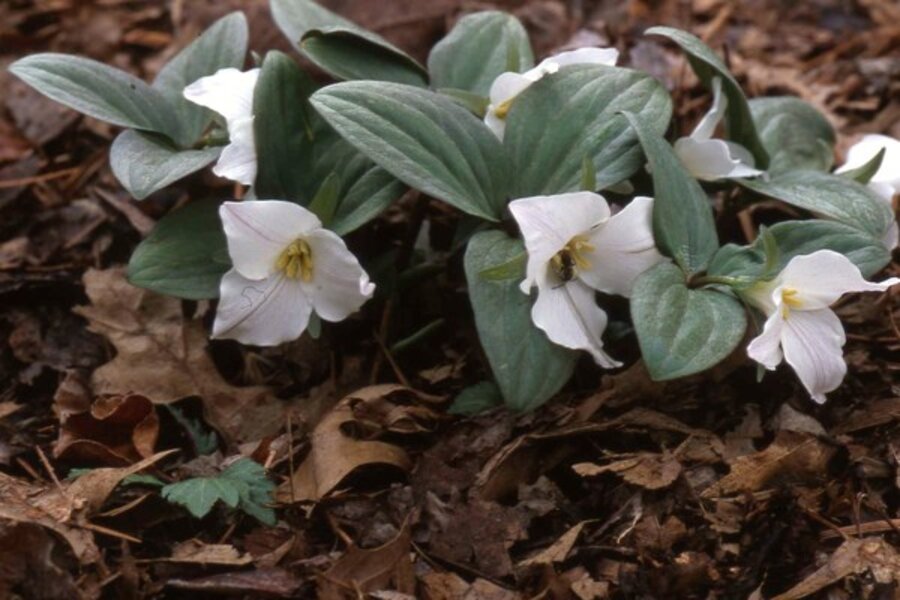My first four wildflowers to bloom each year
I perform my walks of expectation around the garden as if I could hurry spring along and make it happen by my frequent looks. Usually my walks begin two to three weeks before the official calendar date for spring to begin. Every year's weather is different, not necessarily tied to a calendar, but more to cycles and events beyond a gardener's control.
However, I remember and know where all my plants are located from last year, so I ignore my head and follow my expectations into the gardens, all bundled up against cold rains and wet snows.
Whatever weather Mother Nature presents each spring, there is at least a sequence of events that I can expect: Some plants emerge with foliage and patiently wait for the time to present their blooms, while others push up blooms between leaves and unfurl almost immediately.
The following four plants are the first to come up, but also bloom, in my Midwest garden in late winter or on the first day of spring.
Dwarf snow trillium
The dwarf snow trillium (Trillium nivale), Zone 3 to 6, is not only the first plant to bloom in my garden, it is consistently the first plant to emerge each spring. [See first photo above.] The common name fits well, for it is not unusual to see snow and sleet while it is in bloom. I have yet to see the weather damage foliage or flower on this diminutive plant. Usually the stems, with three blue-green leaves of heavy substance, reach about 4 to 6 inches in height and are crowned with three-petal white flowers.
Sharp-lobed hepatica
Second in bloom sequence is the sharp-lobed hepatica (Hepatica acutiloba), Zones 3 to 8. First stems arise from the old tattered stem and foliage. They're covered with soft, whitish hairs, and have a tight fuzzy ball at the top. The little ball waits for a bit of sunlight and splits open to become a five to seven-petaled flower. [See second photo above; click on the arrow at the right base of the first photo.] Color can be white, pink, or blue; mine is white. The three-to-five- part leaves are shaped like the outline of a human liver and heavily mottled. Given time, the tight clumps can produce five to 100 blooms on a plant less than a foot tall.
Trout lilies
Trout lilies (Erythronium americana), Zones 4 to 7, emerge as a multitude of small single leaves from immature tubers checking out the weather before the mature tubers awaken. They are of such heavy substance, they resemble carvings from wax. Soon, twin mature leaves unfold from the drift with a single stem in the center. [See third photo above; click on the arrow at the right base of the first or second poto to go to the third picture.] A yellow bell hangs from the stem reflecting sunshine stored up from last season. Leaves are mottled in shades of brown over green providing the common name.
Spring beauties
Spring beauties (Claytonia virginica), Zones 4 to 9, are exactly that. Their first appearance is a tiny grass-like blade in deepest brown-bronze, perhaps to disguise itself from browsing, but more than likely to catch every weak ray of sunlight. The leaves will turn to green as the flowers appear. Only one-half-inch across, the five-petaled flowers are white to pink with prominent deep red-lavender veins. They tend to seed about and form tiny open drifts only 3 to 6 inches in height.
Disappearing and reappearing
Dwarf snow trillium, trout lilies, and spring beauties are ephemeral, meaning they go dormant soon after setting seed and aren't seen again until they return next spring. Hepatica has a presence above ground all 12 months of the year.
-----
Gene Bush, a nationally known garden writer, photographer, lecturer, and nursery owner, gardens on a shaded hillside in southern Indiana. His website is at Munchkin Nursery. He also writes the Garden Clippin's Newsletter. To read more by Gene here at Diggin' It, click here.





